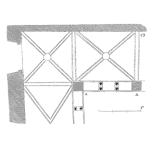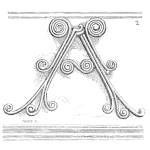
Preservation and repair are as old as sailing, but a written record of how this was managed has not always survived. One failure mechanism that has affected wooden vessels for centuries is shipworm – a mollusc that drills deep holes into the hull.
Shipworm was common in the Mediterranean, so there is a long record of means to combat it. A shipwreck in Kyrenia has been dated to somewhere between 384 BC – 288 BC. The hull was covered with hammered lead sheathing to protect it from shipworm. Archaeological examination concluded that over its lifetime, the ship had received four major repairs, and in-service modification. The Kyrenia ship first sailed with no sheathing, but wooden sheathing was added. Later, lead sheathing was used. (Steffy p. 95) Archeologists have also observed the use of oche on ship hulls in the Mediterranean and debate if the purpose was preservation of the hull. Several Greek and Roman ships with lead sheathing have been studied. By 1514, Spain was using lead sheathing. An Englishman who had served the Spanish crown sheathed a small English squadron with lead sheathing in 1553. (Wilkinson p. 132) In 1624, Monson wrote in Monson’s Tracts that the Spanish and Portuguese used lead sheathing, but that it was “not durable” so not in use in England.











